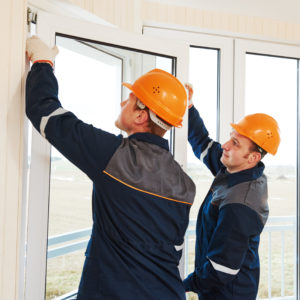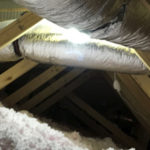 Your customers probably don’t worry about the integrity of their building envelope, but they might about their energy bills. When you’re installing a new HVAC system or performing maintenance tasks, consider the need for efficient wall vents or windows. How do windows and wall systems support a healthy building envelope and an energy-efficient home?
Your customers probably don’t worry about the integrity of their building envelope, but they might about their energy bills. When you’re installing a new HVAC system or performing maintenance tasks, consider the need for efficient wall vents or windows. How do windows and wall systems support a healthy building envelope and an energy-efficient home?
The building envelope is made up of three main components: the roof, walls, and foundation. While all of them have to withstand the elements, each system has different ways of doing so. Roofing systems need to direct water away from the home. Foundations have to keep the moisture in the soil from getting in. Walls have to contend with wind and rain, and they need to be designed to mitigate any breach of the building envelope.
Every door, window, and vent in exterior walls represents a potential vulnerability, so they need to be carefully designed and installed. Windows can be particularly complex and have a huge impact on a building’s energy efficiency.
When your customers think about windows and energy efficiency, they consider single-pane versus double or triple-pane glass. Most North American homes should have double-pane windows at a minimum. For improved efficiency, many window manufacturers now fill the space between the panes with a less-conductive gas such as argon, xenon or krypton.
While the glass is an important factor, the frame and the spacer are equally important. All three components must work together in a high-performance window.
Regarding window frame materials, foam-filled fiberglass frames are the most energy-efficient option, with foam-filled vinyl frames the next best option followed by wood frames.
A window spacer is the seal between the panes of glass. Spacers keep moisture from impacting the glass, and they have a big impact on the thermal performance of the window. An aluminum spacer, for example, will conduct heat or cold quickly. This can cause the sealants to crack, which will allow condensation and fog to get into the window.
Windows need to be selected based on the climate and the position of the window on the structure. A south-facing window will have different requirements than a north-facing window. Fortunately, there are online tools to help you and your customers choose the appropriate window.
Their installation can be more important than the quality of the windows themselves, as an improperly installed window will let water get into the wall system. The window installation needs to include flashing that will direct water away from the window and a drainage gap below the windowsill. The installation also needs to maintain the integrity of a rainscreen if present.
With proper installation, a window can be completely impervious to the driving forces of wind and rain. But sealants can break down over time, and the tiniest imperfection can make ways for water to get into the wall system. This is where the rainscreen becomes vital.
A rainscreen wall system provides an air gap between the cladding or siding and the air and moisture barrier of the building. A properly designed rainscreen system also includes appropriate flashing at all penetration areas and weep holes at the bottom of the wall.
The air gap can be as small as 1/16 inch but is more often closer to 1/4 inch. This creates a capillary break between the back of the cladding and the air and moisture barrier. Water that manages to get past the cladding of the building will evaporate or drain away down the inside of the rainscreen to the weep holes.
Rainscreen wall systems can also include a ventilation opening at the top of the air gap, which can help facilitate natural drying inside the gap.
When you are installing an HVAC system, be sure to use intake and exhaust vents with a one-piece molded base, oversized flange, and a built-in drip edge. And, if a there is rainscreen present be sure to buy rainscreen-compatible ones.



